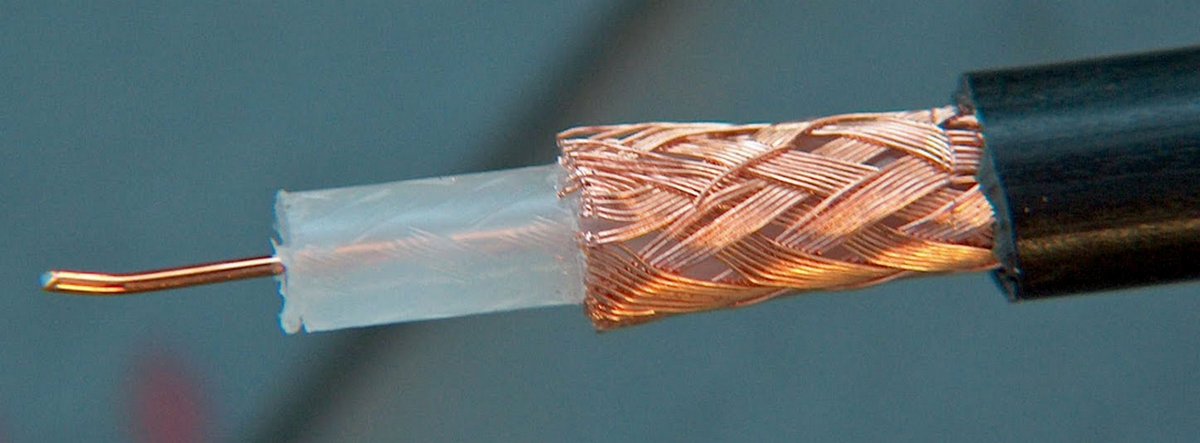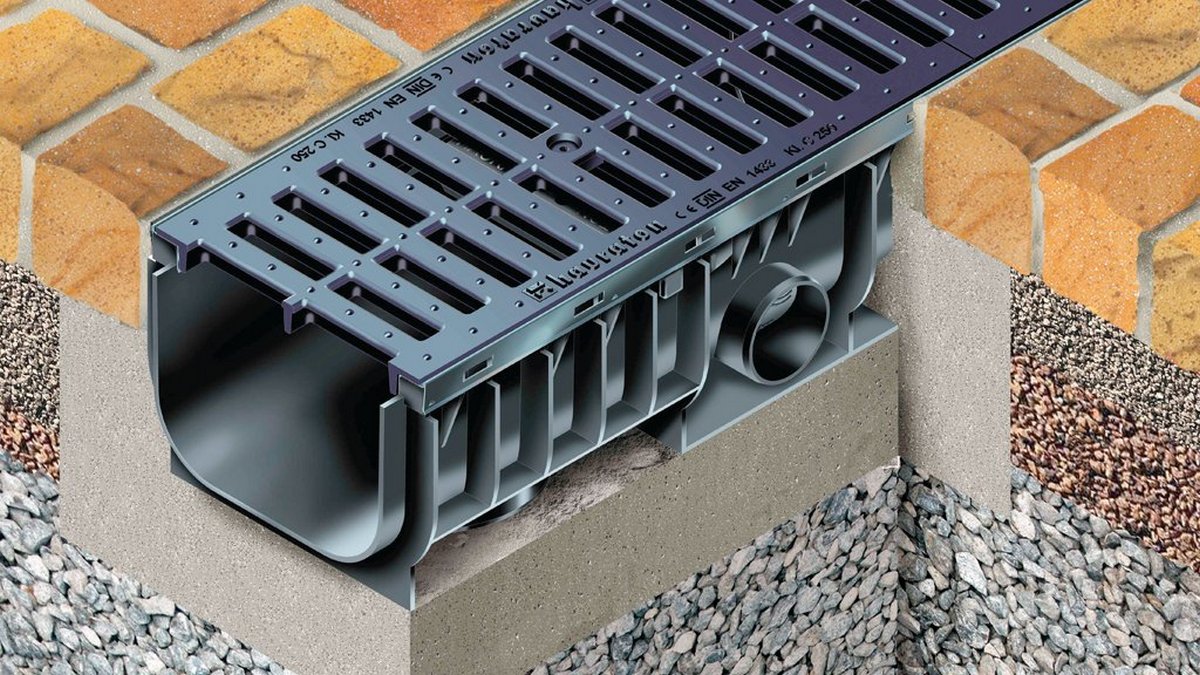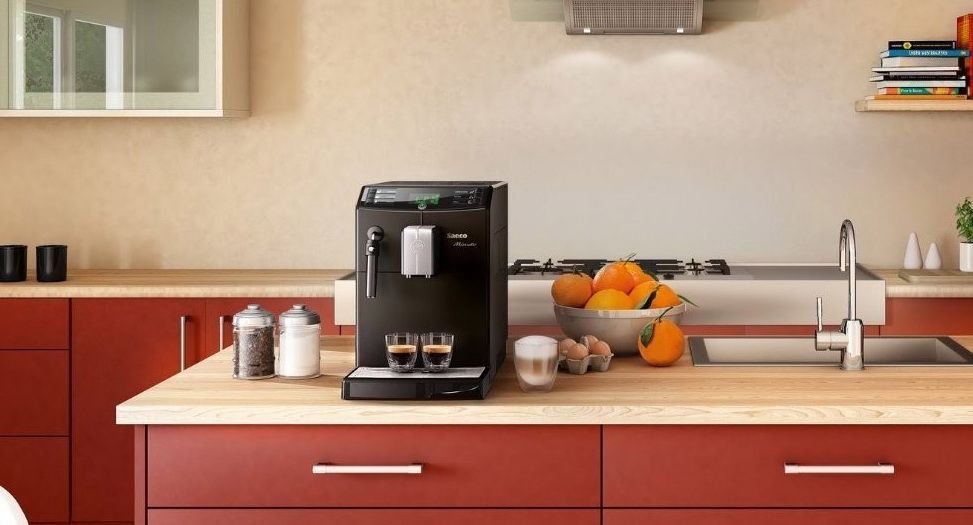Ranking of the best coaxial cables for 2025

A coaxial cable (aka coaxial) is a component of a telecommunications system designed to simultaneously broadcast a number of video signals / transmit information data, while giving out a minimum of losses. The principle of operation lies in the potential difference that is formed during the interaction of two different metal conductors and which are separated from each other by a guide layer of insulation.

Content [Hide]
- 1 Types, benefits and labeling
- 2 Design features and materials of manufacture
- 3 The difference between expensive and cheap products
- 4 Critical cable parameters for signal reception / transmission
- 5 Mounting Features
- 6 Self-soldering and tinning of coaxial cable
- 7 Difficulties of choice
- 8 Ranking of the best coaxial cables for 2025
- 9 Conclusion
Types, benefits and labeling
The type of consumable material under consideration is used in various fields. But more often it is used to transmit a video signal. Nevertheless, for certain tasks, special types of coax will be needed:
- The cable is thick (6-10 mm in diameter or more) - is a classic variety, characterized by increased rigidity, has some difficulty in terms of installation. Quite expensive, but the signal transmission delay through it rarely exceeds 4.5 nanoseconds.
- The cable is thin (2-3 mm in diameter) - it is highly flexible and is designed to transmit a signal over short distances, because when it is passed through it, the signal quickly attenuates (the delay can be 5 nanoseconds). Perfectly will be suitable for arrangement of local computer networks.
It is for working with a television signal that standard and combined wires can be used. The design of the latter specifically includes two cores for supplying power to the camera and transmitting control signals.It is possible to manufacture on the basis of a steel cable, so that laying through the air between the supports would be more convenient. A combined cable (with equal basic technical parameters) is characterized by a lower cost. Its installation and installation, even with a small number of fasteners, is simple and can easily fit into the interior of almost any room. As a result, combined cables for video surveillance can have the following markings:
- KVKNG - the shell successfully resists combustion, is versatile;
- KKSVG - the central multiwire core is used in the design;
- KVKPT - the design is equipped with a steel fastening cable;
- KVKP-shell is additionally clad in polyethylene, which makes it safe to lay and operate outdoors between buildings;
- KVKV - the wire is dressed in a PVC box for laying indoors.
In Russian retail chains, large sellers decided to implement a very simple labeling scheme for the consumables in question: domestic samples are marked with the letters “RK” (Russian cable), but if this abbreviation is absent, then this means foreign-made goods.
As mentioned above, for a coaxial, important properties are its thickness, the cross-sectional area at the central core, the density of the primary sheath and the insulating material. It is these qualities that have a special impact on cable resistance, which, in turn, determines the quality of the transmitted signal from the source (camera) to any receiver. Therefore, it is so important for homogeneous networks, whether it is video surveillance or structured cabling, to use wires with the same resistance value throughout the entire length.
Design features and materials of manufacture
The types of cables under consideration include:
- The central wire located inside the braid, which is made on the basis of a single-core / stranded wire or a copper tube. The material of execution of this component directly provides the range of the signal and affects the level of its deformation during transmission.
- Dielectric insulation, which is required to secure the immobility of the conductive line. It is usually performed from completely different polymers and the signal decay rate depends on it, as well as the wave impedance.
- The braid is an outer conductor, made on the basis of a foil, either from an aluminum film or a metal wire. Designed to provide protection from the negative effects of external electromagnetic fields.
- The outer shell provides general protection of the totality of all the above elements from various mechanical influences.

It should be noted that an additional foil-based shield can be provided in the cable structure, which is typical for specialized samples.
As a rule, the central core can be made of the following materials:
- Aluminum or copper wire;
- Copper-plated steel wire or copper-plated all-aluminum wire;
- Combined structure - the core is a set of small and thin strands;
- Silver-plated copper wire.
For the central core, copper or aluminum can be used both in pure form and in alloys, because this component is the main one and is responsible for signal transmission. By its appearance, it is quite possible to accurately determine the material of manufacture. Silver would mean aluminum or steel, while gold would mean copper.The larger the diameter of the core section, the better the signal transmission (any) will be. However, for thick samples, the cost is higher. Cable insulation, on the other hand, protects the internal core structure from jumping with the braid. The insulation can be based on polyethylene or polyurethane. Its structure can be monolithic or foamed. The monolithic version is considered ideal for laying in rooms with a high level of humidity; it more reliably protects the central core from mechanical damage. The foamed version will be a comfortable solution when laying a network with many bends / turns, because it has excellent bending performance. The braid, in fact, is an additional core with a shielded ground. If it is made in a dense copper form, then the signal receives the best quality. And the last element of the structure is the outer outer shell, which is intended solely to prevent mechanical negative loads on network sections.
The difference between expensive and cheap products
In the modern Russian market, you can often find the consumables in question with almost identical technical parameters, but at different prices. This situation is far from being due to the subjective desires of the seller in terms of margin, and even it does not depend on the brand of the manufacturer. In general, there are several factors that affect such a difference:
- The quality of the conductor - this component is very important, especially if the product is supposed to be used in particularly difficult conditions (for example, in pipes of a cable common trunk, or to install a line in the open air, or to lay it on a difficult terrain).Cheap products will give out a tensile strength that will be half that of expensive ones, which will lead to rapid wear of the system.
- Shell material - external insulation must withstand external negative influences as efficiently as possible, for example, sunlight, temperature changes, etc. In cheap variations, low-density polyethylene is usually used, which indicates a high degree of vulnerability.
- Dielectric protection - it, to a greater extent, determines the price factor. If it is made by the method of chemical foaming, and not physical, then, over time, active radical particles will degrade the electrical quality and the degree of mechanical protection at once.
Given the above, we can summarize that cheap models are more likely to deteriorate quickly. Thus, if reliability and long service life are a priority, then it is better to immediately purchase the proper branded product.
Critical cable parameters for signal reception / transmission
Wave impedance
This is a key parameter that defines the scope of the products in question. Samples with a level of 50 ohms are considered the most common, which is especially true for the RG and LMR series. Such models should be used if the priority is to reduce high frequency losses during signal transmission. These variations, as well as samples at 93 ohms, are commonly called radio frequency, because they are better suited for transmitting a radio signal, for example, in the conditions of a communicating internal part of electronic equipment, or for devices with a variable antenna connection. The cable section for them is provided in the range from 2.5 to 3 mm.By the way, almost all GSM antennas, satellite communications antennas of the GPS standard use exactly 50-ohm cords and patch cords. The next most common impedance level is 75 ohms - it is widely used in television devices, which indicates the strength of such models. For this application, small signal losses do not play a significant role, so such coaxial resistance will be an ideal solution for wiring satellite television such as CSTV|SAT or CCTV cameras.
Section Thickness and Attenuation Properties
The quality of signal reception inside the premises will be determined by the rate of its attenuation in the wire. Any cable, regardless of the material of manufacture, will necessarily lose part of the transmitted information as a result of its passage from the source to the receiver. The lower the degree of signal suppression on each meter of wire, the better it is. Accordingly, the thicker the cable, the better it holds the passing data. Naturally, this factor will also depend on the features of the internal structure, but based on the technical parameters, some patterns can be deduced. For example, a cable with a diameter of 5 mm and a length not exceeding 10 meters will be an ideal solution for transmitting a TV signal indoors. For a length of 20 meters, a consumable with a thickness of 6 mm will already be required, and for especially long and branched networks, where the length exceeds 50 meters, a thickness of 7 mm will become a minimum.
Mounting Features
The bending radius of the coax must not be less than twelve radii along the outer cable sheath. Bends will in any case over time lead to squeezing, which will make it possible to close the shielded braid. And this is already equal to stretching / breaking the entire network as a whole.Therefore, during installation, do not hang the wire to a length exceeding 15 meters. Also, it is extremely important to properly cut the cable to connect the connector. Here the question is in the most accurate removal of the shell, because it is she who protects the internal structure from the penetration of water and external mechanical loads. Also, it is not recommended to lay the coax in its natural form in water / underground - moisture will easily destroy the shielding and damage the middle core. If, nevertheless, some segment of the network is constantly in such conditions, then it must be treated without fail with a silicone-based sealant. In principle, there are even connectors that are not afraid of moisture. In any case, it is preferable to use factory protection options than to make protection yourself.
Self-soldering and tinning of coaxial cable
Soft solder is used for these repair/joining operations. To carry out such procedures, the master must have minimal soldering skills on lead and tin solder. The level of tin content in the solder can be determined by ear, by the crunch, when trying to bend a piece of solder alloy. The more pronounced the crunch, the more tin it contains and, accordingly, its melting point is lower.
For soldering / tinning coaxials for repair / connection, weak soldering irons with a power of up to 100 watts and a voltage of 220 volts are used. If it is planned to repair the network on site and in rooms with high humidity, low voltage soldering tools are used. During soldering, the tip of the tool must be constantly cleaned of scale.The soldered places themselves need to be cleaned with fine sandpaper or a jewelry file.
In order to reduce the likelihood of wire oxidation, it is allowed to use a rosin-alcohol mixture, which is applied to the processing site simultaneously with solder. It should be noted that the place of cable processing before soldering must be subject to tinning. The solder itself is heated to the state of a drop, which is brought to the place of processing and heated until both ends are melted. Always make sure that the protective sheath of the cable is not accidentally melted. The soldering process itself should occur as quickly as possible.
Difficulties of choice
Before buying a coil of coaxial cable, you should pay attention to such technical points as:
- The conductor material - the best option in terms of price and quality will always be copper, especially its tinned variations. Copper conductors are flexible, excellent for the proper transmission of any type of information. Professionals advise avoiding aluminum products (as well as alloys similar in characteristics to them), even despite their affordable cost. The reason for this is the particular fragility and low data transfer rate.
- Cross-section and outer diameter - these parameters directly affect the speed of the signal and the speed of its attenuation. Of course, modern technologies make it possible to make the cable not so thick, while leaving the above properties at a decent level, but still it is not possible to reduce the thickness of the wiring qualitatively and many times without compromising the technical aspects of transmission. Thus, in order to avoid a total mistake, one should be guided by the rule that the thicker the cable, the better it is.
- Shielded braid (aka foil) - the thicker its layer and its strength, the more reliably the transmitted signal will be protected from external interference. Thick foil will allow cable laying even in places with a very "dirty" electromagnetic background;
- Upper shell - for indoors, the PVC option is perfect, but for laying outdoors, you already need to use a shell made of polyurethane or polyethylene (they are considered more resistant to sunlight, temperature extremes, abrasion, etc.). For laying a network in places with a high risk of fire, it is necessary to use products with a special low-combustible winding that can successfully withstand high temperatures.
Ranking of the best coaxial cables for 2025
Separate extensions
4th place: DORI (5 m, male-female, coaxial cable 3C2V)
votes 0
The product is intended for transmission of analog high-frequency television signals, as well as switching of TV-video devices via coaxial connector lines. The core is made of high-quality pure oxygen-free copper, and ferrite rings on it will provide reliable interference suppression. The convenient shape of the ends will provide an opportunity for more practical connection of hard-to-reach areas of switching devices. Products comply with the following certifications: RoHS, CE, FCC, TIA, ISO
Contacts are silver plated. Sheath type - PVC - shielded (foil), conductor material - pure oxygen-free copper. The recommended cost for retail chains is 290 rubles.

- Sufficient length;
- Convenient and standard connection;
- Adequate price.
- Not detected.
3rd place: RG-6U, 75 ohm, CCS/Al/Al, 48% (10m)
votes 0
Made from durable high quality materials. The inner conductor is made on the basis of copper-clad steel wire with a diameter of 0.9 mm. The dielectric is polyethylene foam. The screen is represented by solid aluminum foil. The outer conductor is made of aluminum wire in the form of a braid (wire diameter 0.12-0.15 mm, density 48%). PVC outer sheath. The cable is used to connect television systems, video cameras for external and internal surveillance, internal and interconnect connections of general industrial and household radio devices. The overall diameter is 6.8 mm, the impedance is 75 ohms, the coupling resistance is 200 mOhm/m. Operating temperature from -40 to +60 degrees Celsius. The recommended price for retail chains is 394 rubles.

- Warranty - 15 years;
- Durable plug;
- The softness of the fold.
- Somewhat weak binding.
2nd place: DORI 10 m (RG6, F-connector-F-connector + TV adapter)
votes 0
The product is made of high quality materials. The central core is copper-plated CCS steel, its diameter is 1 mm. The dielectric is polyethylene foam. The double screen is made of aluminum foil and aluminum wire. The density of the braid is 32%. Sheath material - PVC, outer diameter 6.8 mm, impedance - 75 Ohm. Coaxial is used to connect various equipment equipped with F-connectors (antennas, receivers, TVs, etc.). The recommended cost for retail chains is 507 rubles.

- Good signal transmission;
- The presence of adapters;
- Sufficient length.
- Somewhat sensitive to folds.
1st place: GreenCab CCA Outdoor (GK-202) KVK-P-2+2×0.75 mm shielded black
votes 0
Combined outdoor KVK for video surveillance with power supply (for DVR, AHD video camera, video intercom). The sample has a cross section of 0.75 mm and is intended for transmission of television signals in video surveillance systems with simultaneous power supply and / or transmission of control signals. It consists of a radio frequency (coaxial) cable and power wires combined under one sheath. Outdoor installation is allowed. It has a black color, the shell is made of polyethylene, resistant to temperature differences and ultraviolet rays. It does not bend, which is important in winter when icing, the conductor is PURE COPPER, the operating temperature is from -40 to +85 degrees Celsius, the cable diameter is 8 mm, the operating voltage of the conductive core is up to 600 V. Easily transmits a video surveillance and power signal in excellent quality without interference on specialized cable routes. The model itself is elastic, which allows you to carry out hidden laying in the most inaccessible places without loss of signal quality. The recommended cost for retail chains is 1265 rubles.

- The main material is pure copper;
- The design includes power supply wires;
- Adequate price.
- Not detected.
Bays for laying full-fledged networks
4th place: SAT 50M, 75 Ohm, CCS/Al/Al, 75% (20m)
votes 0
A simple and efficient consumable capable of connecting and transmitting a high-quality television signal in networks with a connection to several receivers using a single source. Possibility of using the wire in difficult weather conditions. The connection is very simple, self-installation of plugs with different connectors is allowed. The recommended cost for retail chains is 415 rubles.

- Supplied with protective caps on the ends;
- Variability in the use of connectors;
- Allowed to work in difficult weather conditions.
- Not detected.
3rd place: TITAN 5D-FB CCA (25 meters) for connecting external antennas, 5D-FB CCA cable
votes 0
The sample is intended for connecting elements of a cellular signal amplification system. Areas of use - cellular signal amplification systems of all standards in 50 Ohm cable assemblies for various purposes. It is also possible to create paths for connecting various 50 Ohm antennas. It is allowed to equip antenna-feeder devices and work in the Wi-Fi / WiMax standards of the 2.4 GHz system. The recommended cost for retail chains is 640 rubles.

- The ability to transmit a high-quality radio signal in cellular networks;
- Wide scope;
- Affordable price.
- Not detected.
2nd place: Pro ConnectorRG-6U - 30 meters
votes 0
This RF product has polyethylene foam insulation and a PVC jacket.It is the most common solution for connecting internal and inter-unit connections of general industrial and household radio devices, for connecting television systems, as well as for connecting video cameras for outdoor and indoor surveillance. The design provides for an inner conductor on steel wire clad with copper. The dielectric is polyethylene foam. The screen is presented in the form of a continuous aluminum foil. The density of the braid is 48%. The recommended cost for retail chains is 728 rubles.

- Connectors included;
- Thick core;
- Wave impedance of 75 ohms.
- Not detected.
1st place: RG-6U black -30 meters (75 Ohm)
votes 0
For the transmission of television and video signals. Set: F connector - 4 pcs, TV plug - 1 pc, cable connector (barrel) 1 pc, Clamp (Clamp) black 100 x 2.5 - 100 pcs. A complete set with a sufficiently long bay that allows you to immediately create a small network. The consumable is made of durable high-quality materials. Inner conductor made of copper-clad steel wire with a diameter of 1 mm. The dielectric is polyethylene foam. Screen in the form of continuous aluminum foil. Outer conductor made of aluminum wire in the form of a braid (wire diameter 0.12 mm, density 42%). PVC outer sheath. The recommended cost for retail chains is 1762 rubles.

- Excellent equipment;
- Possibility of laying on ceiling structures;
- Tight braid.
- Not detected.
Conclusion
Satellite/digital television, structured computer data transmission networks must ensure reliable transmission of signals and information. It is the coaxial cable that today is able to provide all the necessary conditions for these purposes. However, for each task, it should be selected as accurately as possible, for which you will need to know the basics of its device and the features of use.
new entries
Categories
Useful
Popular Articles
-

Top ranking of the best and cheapest scooters up to 50cc in 2025
Views: 131651 -

Rating of the best soundproofing materials for an apartment in 2025
Views: 127691 -

Rating of cheap analogues of expensive medicines for flu and colds for 2025
Views: 124519 -

The best men's sneakers in 2025
Views: 124033 -

The Best Complex Vitamins in 2025
Views: 121940 -

Top ranking of the best smartwatches 2025 - price-quality ratio
Views: 114980 -

The best paint for gray hair - top rating 2025
Views: 113395 -

Ranking of the best wood paints for interior work in 2025
Views: 110319 -

Rating of the best spinning reels in 2025
Views: 105329 -

Ranking of the best sex dolls for men for 2025
Views: 104366 -

Ranking of the best action cameras from China in 2025
Views: 102216 -

The most effective calcium preparations for adults and children in 2025
Views: 102011









